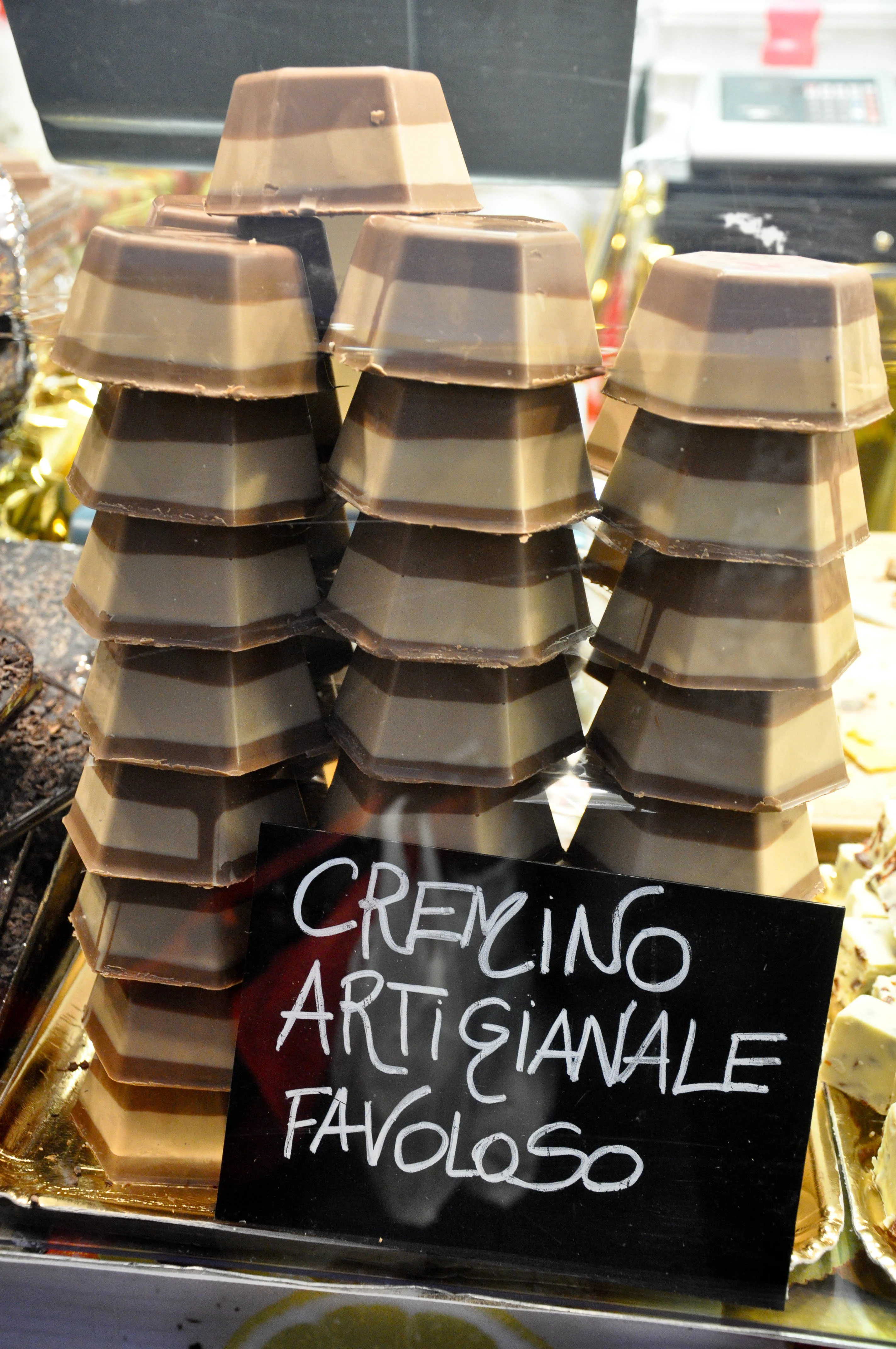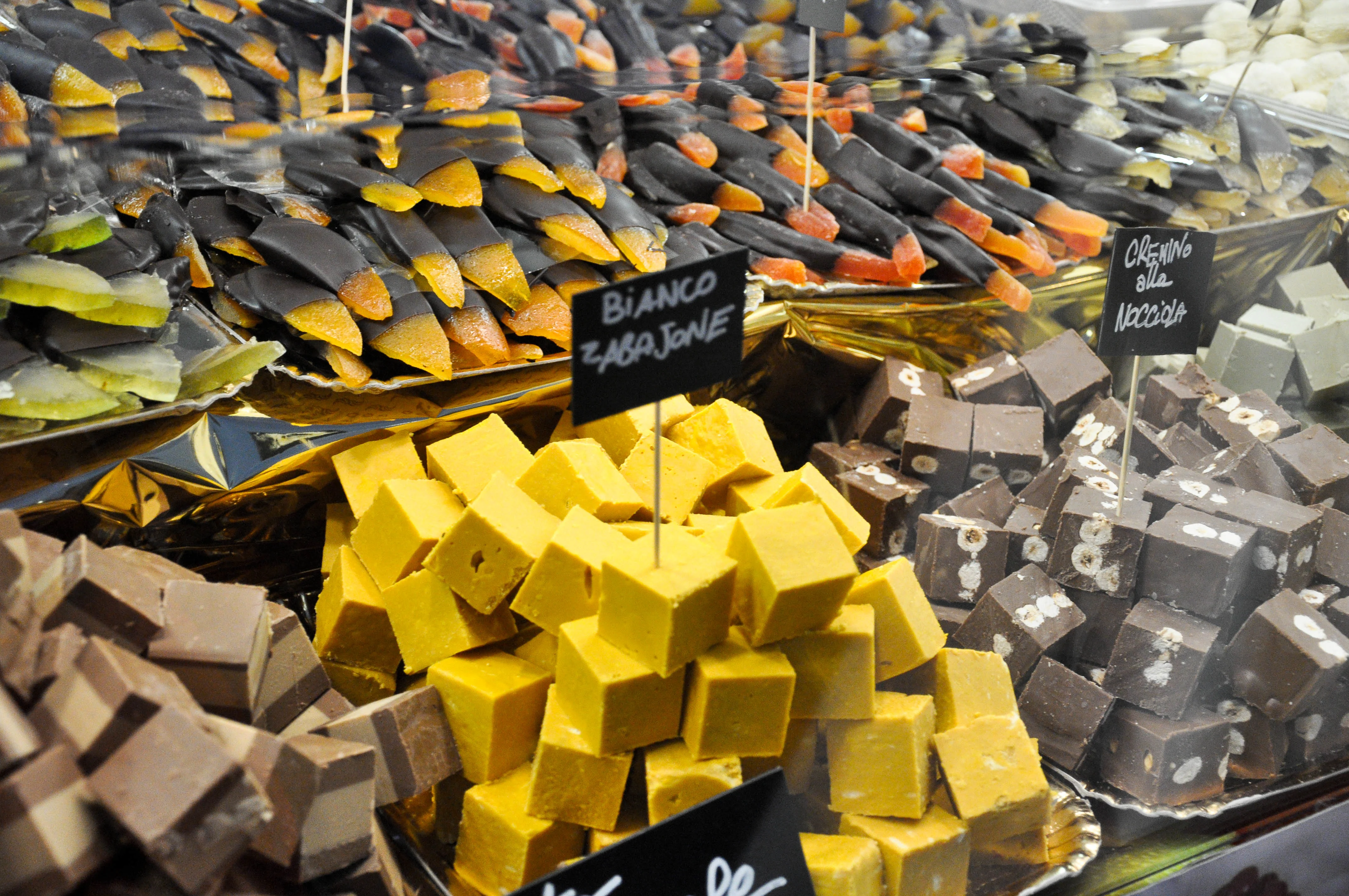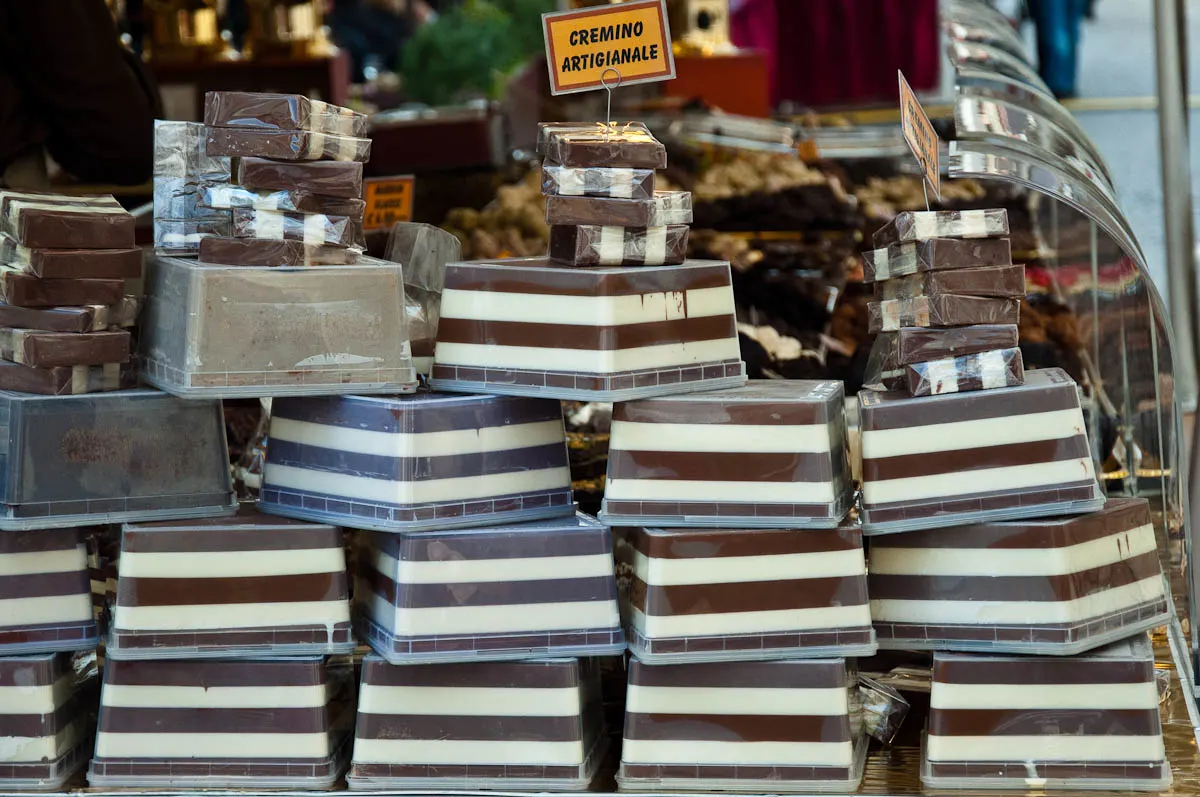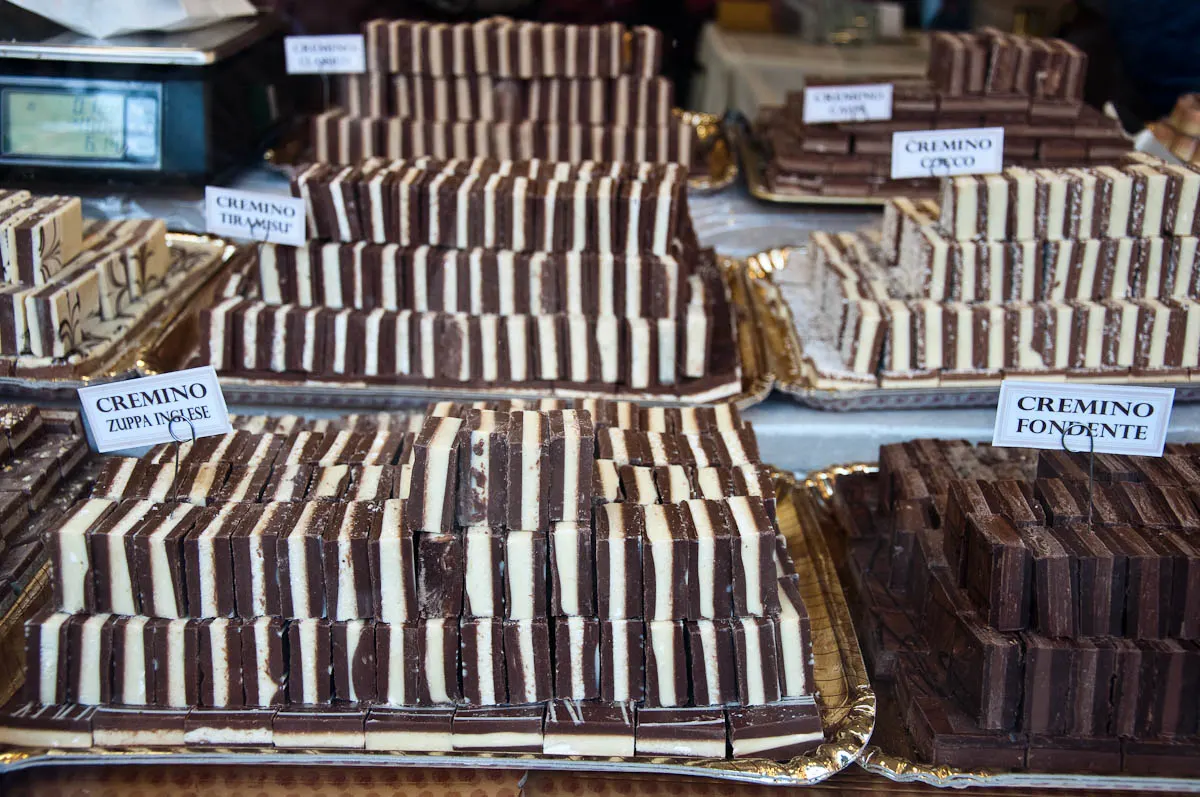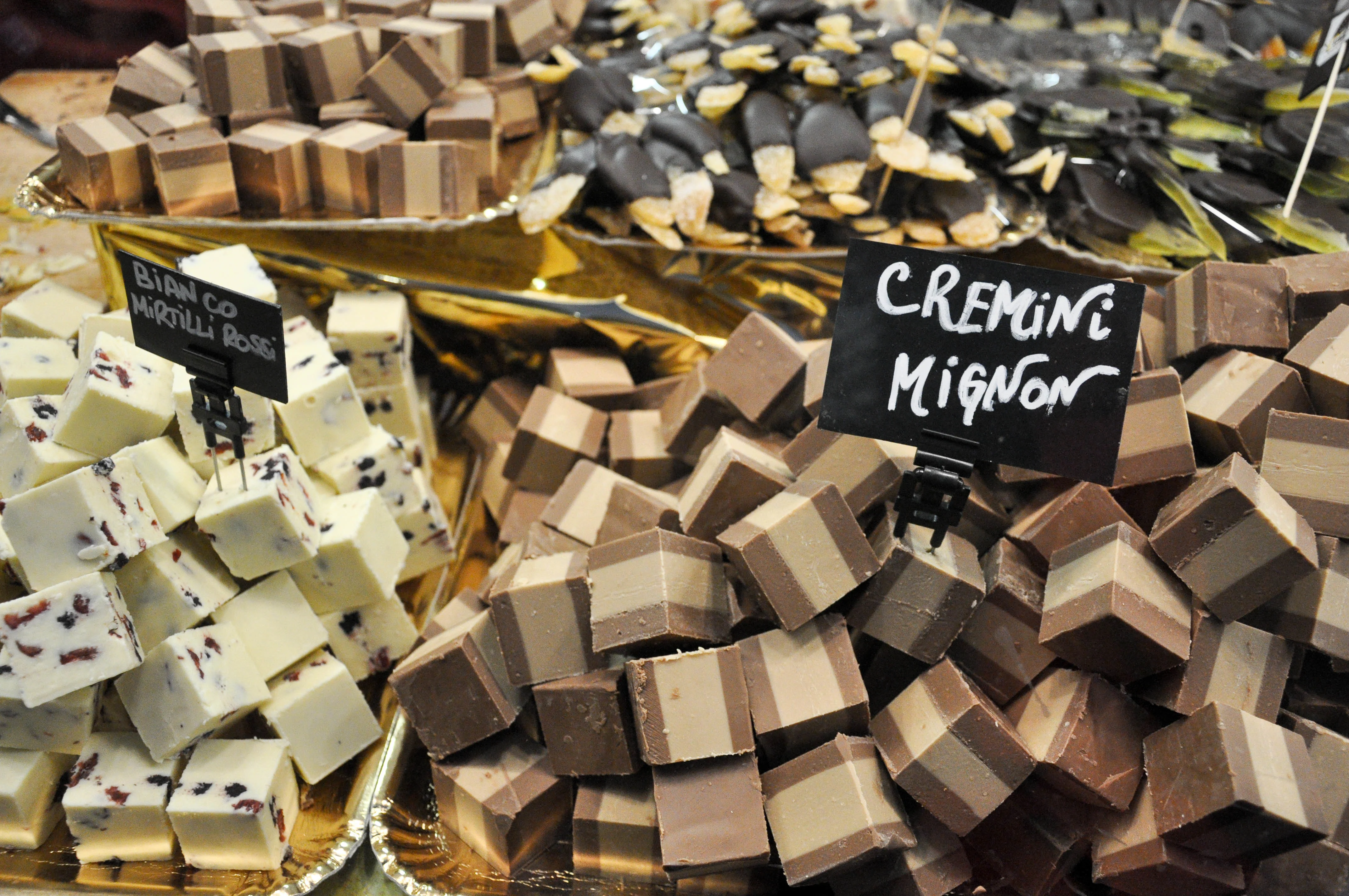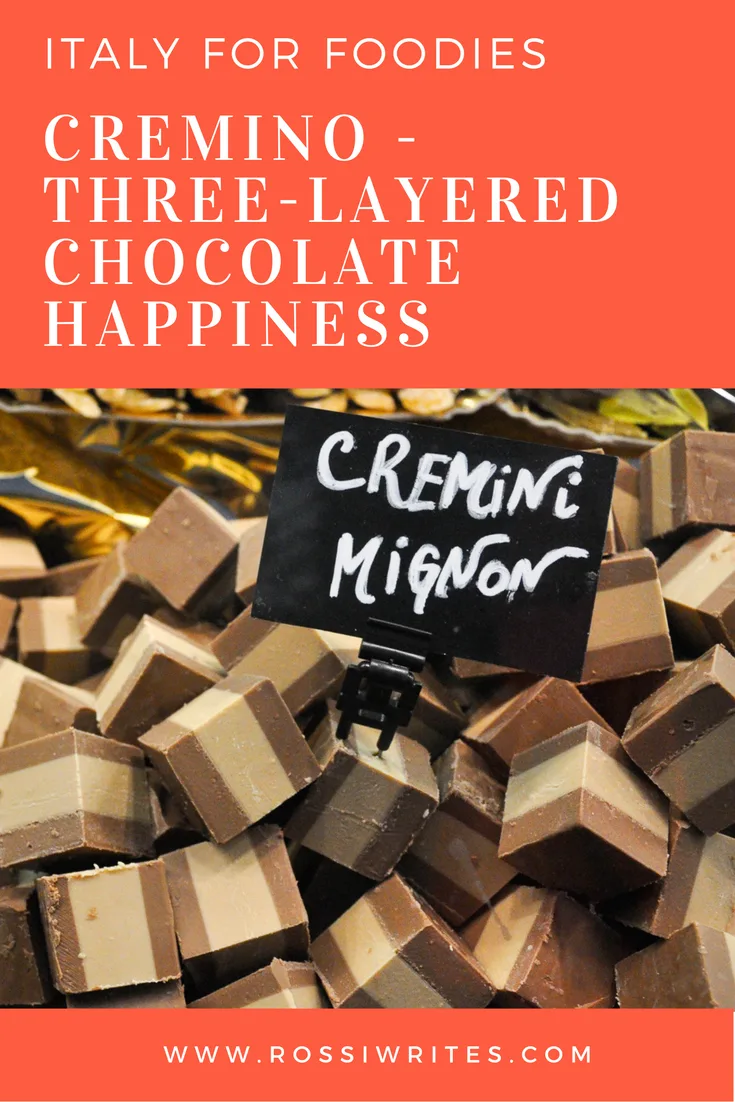Ah, cremino!
This smooth, creamy, melt-on-the-tongue perfect piece of chocolate. The moment you try it for yourself, will be a moment of bliss and revelation.
So, today, I want to tell you more about it in order to convince you to head straight to Italy (or, at least, your local Italian deli) to get your mittens on some cremino. And then some!
Or, you may have already had the pleasure of sampling cremino one or more times. If this is the case, then welcome to my unofficial club of cremino devotees. You will be among kindred spirits.
First things first though. Let’s ask a pertinent question.
Question: What is a cremino?!
Answer: It is a type of chocolate made of three layers. The outer ones are traditionally made of gianduja and the inner one is either a coffee-, hazelnut- or lemon-flavoured chocolate paste. Only the best products are used. For example, hazelnuts from Piedmont and Sicilian lemons. Cremino’s birthplace is Turin – the capital of the Northern Italian region of Piedmont where it has been produced since the second half of the 19th century. The first official documents mentioning cremino date back to 1934 and nowadays a Ministerial decree has declared it to be a ‘traditional food product of Piedmont’.
N.B. Just to throw in the fact that gianduja is two-parts chocolate and one-part ground hazelnuts which is lovely both as a spread and as a hard piece of chocolate.
So, yes, to get back to cremino – it is made of chocolate, hazelnuts and (take your pick) coffee, hazelnuts or lemon! In other words – a divine combination able to give your senses a proper little energy kick whilst your mouth can’t get enough of its velvety nature.
‘Cause cremino is velvety and then some. It has a very creamy, very smooth texture. The second you put it on your tongue, it starts to melt with the heat of your body and it gives you this satisfying full-bodied feeling which only high quality ingredients and chocolate can achieve.
I think the first time that I came across cremino was as part of those really nice, luxury boxes of chocolates which every self-respecting Italian chocolate confectioner has on their product list. The cremino in those is usually shaped like a little cube or cuboid. It is also wrapped in foil tightly circled with a paper band.
So, these little cubes are really nice and dainty! And, in my case at least, they were usually the first ones to disappear off the chocolate selection box.
Imagine my delight when, upon moving to Italy, I actually discovered that cremino doesn’t come just in such tiny shapes!
Instead, you can find it in any form – from bite-sized morsels to huge slabs weighing probably a ton. Figuratively speaking, of course, but you get the drift. And if you don’t, just have a look at the photo herewith. Yes, this is how big cremino can get. Obviously, you don’t have to buy the whole slab (although, I have been tempted). You simply ask for however much you want and they cut a piece for you to the tune of around 3.50-4.00 euros per 100 grams.
Plus, and even though originally, cremino had been strictly a gianduja and coffee/hazelnut/lemon-flavoured affair, nowadays its repertoire has been greatly expanded and you can find it in almost any flavour that you could think of. Coconut, zabaione, dark chocolate, tiramisu, cappuccino, sea salt, caramel and even zuppa inglese (which, even though literally translated means ‘English soup’, in fact it’s the Italian term for the English triffle! Yes, go figure!).
Bear in mind that some modern versions of cremino have even dispensed with the three-layers requirement. For example, see the zabaione cubes in one of the preceding photos. Other new varieties of cremino come studded with nuts and dried fruit. So, every taste is covered.
Where to find cremino in Italy, you may ask. Try any fine chocolate shop (especially in Turin) or go to a Chocolate Festival.
These festivals are regularly held all over Italy and cremino is bound to be one of their biggest stars.
In Vicenza, where we have been living since August 2014, we have a chocolate festival each October. But nearby towns and cities like Soave and Castelfranco Veneto (to mention but a couple) also hold their own.
There you will find both huge slabs and much smaller shapes of cremino with every possible size in between. Flavours will be varied. So, take your pick!
Are you a cremino devotee? Which typical Italian chocolate product you can’t resist? Share with me your thoughts and impressions in the ‘Comments’ section below. I would love to read them and engage with you.
Click here to read more articles from my blog series ‘Italy for Foodies’ to find out why you shouldn’t stop just at pizza and pasta in the bel’ paese.
For more stories like this, please, follow me on Facebook and subscribe to my weekly strictly no-spam newsletter. Thank you!


